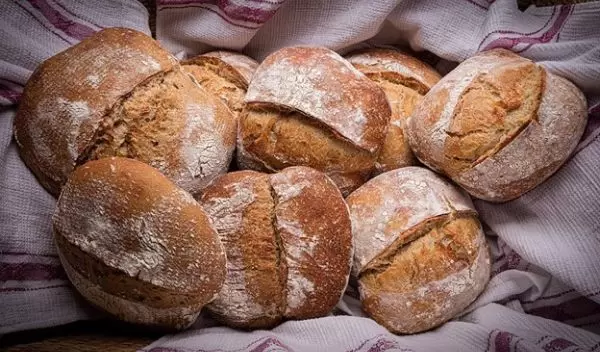
The microbial life of sourdough
In a study of 500 sourdough starters on four continents, scientists have gained new insights into how environmental factors contribute to each sourdough starter's microbial ecosystem, and how different types of microbes influence both a sourdough's aroma and how quickly the sourdough rises. The results may surprise sourdough enthusiasts.
"We didn't just look at which microbes were growing in each starter," says Erin McKenney, an applied ecologist at North Carolina State University. "We looked at what those microbes are doing and how those microbes coexist with each other."
The results, "The Diversity and Function of Sourdough Starter Microbiomes," appear in the journal eLife.
Sourdough is an excellent model system for studying the interactions between microbes that shape the overall structure of the microbiome, the scientists say. By studying interactions between microbes in the sourdough microbiome, researchers can better understand interactions between microbes in more complex ecosystems.
For this study, the researchers collected 500 samples of sourdough starter, primarily from the United States and Europe, though there were also samples from Australia, New Zealand and Thailand.
The biologists performed DNA sequencing on all 500 samples. Based on the findings, the scientists then selected 40 starters as being representative of the diversity they saw. Those 40 starters were then cultured and assessed in three ways.
First, the researchers worked with an expert panel of sensory professionals to assess each starter's aroma profile. Second, the biologists performed an analysis of the volatile organic compounds released by each starter. Lastly, the researchers measured how quickly each of the 40 starter doughs rose.
In the U.S. National Science Foundation-funded study, the scientists determined the structure of the starters' aromatic compounds, as well as the relative amount of each compound released.
Geography, it turned out, didn't really matter.
"Lots of bakers felt sure that specific factors were responsible for the variation between types of sourdough," McKenney says. "But what we found is that, while there could be tremendous variation between the microbial ecosystems of different sourdoughs, we could not find any single variable that was responsible."
Adds David Rockcliffe, a program director in NSF's Division of Molecular and Cellular Biosciences, "This is a notable example of how investigations of microbial communities impact and potentially add facets to our daily lives, from food production to biotechnology."


